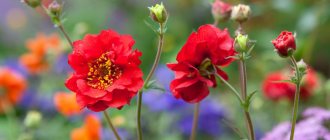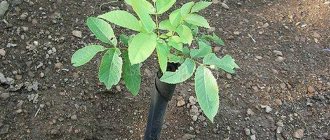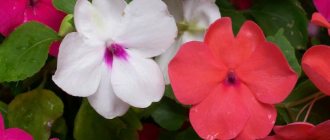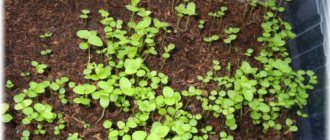Gorgeous bright gladioli are the favorite flowers of many gardeners. These plants can decorate any area, always look great, and can also be used for cutting. Gladioli are often grown in open ground, however, pots can also be used. In the article we will learn how to grow gladioli in pots, find out all the intricacies of this process, and get acquainted with the varieties most suitable for this purpose.
Description
Gladiolus is a bulbous perennial plant belonging to the iris family. The flower is also found in the wild: in some Asian, South African and European countries. Scientists have currently discovered about 200 species of this wonderful plant.
External characteristics
Gladioli grow quite tall, have smooth straight stems reaching 50-200 cm. The leaves of the plant are very elongated (see photo), sword-shaped, also very long (50-80 cm).
As for the flowers, they are the main decoration of the plant. The buds have an elegant funnel-shaped shape and always consist of six petals. The shades of the buds can be different: most often they are yellow, pink, purple, red tones. A special feature of the plant is its inflorescences: the buds do not grow singly, but are collected in oblong groups consisting of approximately 15-22 flowers.
How to plant?
Work order:
- Cover the bottom of the pot with a 2–3 cm layer of drainage.
- The planting container is filled to half with soil.
- The ground is covered with a centimeter layer of sand.
- The bulbs are laid out on a sand cushion, sprouts up, with a distance of 5–6 cm from each other and from the walls of the pot.
- Cover with soil to a height of three bulb diameters and water generously.
- The pot is placed in diffused light, and after germination is transferred to a sunny place.
Important! Planting depth depends on the diameter of the bulbs, so they are sorted by size for each pot.
Varieties
Since gladioli grow quickly and quite strongly, not all varieties are suitable for planting in a pot. It would be right to choose varieties that are not very tall: species reaching a height of 25-60 cm are best suited. Next, we will get acquainted with the most popular varieties of gladioli suitable for pot growing.
Tinkerbell
The variety belongs to the butterfly-shaped species, it looks very beautiful and impressive. This gladiolus grows to a height of 45-75 cm, which is quite suitable for pot cultivation. The color of the petals is orange, bright, while the throat of the buds is yellow.
Moscow white stone
A domestic hybrid reaching 60 cm in height. The plant is very unusual and beautiful, it has graceful petals with a corrugated texture. Note that about 40 buds bloom simultaneously on this gladiolus: the spike-shaped inflorescence turns out to be very lush and elegant.
White City
This is a primrose gladiolus, which boasts a bud diameter of about 5-7.5 cm. The color of the petals is snow-white, the inflorescence consists of 23 magnificent buds
Bow Peep
Dwarf gladiolus: pot growing is ideal for it. The plant usually reaches half a meter in height, sometimes it can grow up to 65-70 cm. The buds have an unusual corrugated texture and are colored in a delicate apricot shade.
Georgette
A very beautiful variety, also suitable for open ground. The color of the petals is red and yellow.
Preparing the bulbs
Before planting gladioli, the planting material is checked and freed from husks. Bulbs with signs of damage, rot or dark spots are discarded. If a small part of the bulb is damaged, the affected areas are cut out. The cut area is treated with brilliant green and powdered with wood ash. Wrinkled and soft bulbs, devoid of moisture, are not used for planting.
To disinfect, planting material is kept for 15 minutes in a weak solution of potassium permanganate. Instead, you can take a solution of drugs such as “Karbofos”, “Fundazol”, “Maxim”. Then, to accelerate germination, the bulbs are treated with any growth stimulant, for example, “Cytovit” or “Epin”.
For planting, it is advisable to use bulbs that have already sprouted. For germination, planting material is removed from winter storage 15-20 days before planting. The husks are removed from the bulbs and primary processing is carried out. Then leave at room temperature. If by the time of planting the bulbs do not show sprouts or signs of germination, they are discarded.
Growing conditions
Let's find out what conditions are best suited for growing potted gladioli.
Location and lighting
Gladioli love abundant but diffused lighting. It is better not to keep the flower in direct sunlight, as this can cause burns to its delicate petals. In a pot, gladiolus can be placed on a balcony or windowsill, protecting it from the midday sun.
In summer, you can also place the pot in the garden: always in a well-lit area. The flower needs 12 hours of daylight. In winter, this condition cannot be achieved with natural light, so artificial lamps must be used.
Temperature
Although gladioli are heat-loving plants, they can also thrive in moderate temperatures. The optimal temperature is considered to be +20 degrees. Flowers do not like extreme heat and may even die if they are grown indoors in the summer without ventilation and air conditioning. The plant also needs to be protected from wind and drafts.
Priming
The substrate for potted gladioli must be fertile and permeable. During its rapid growth and flowering, the plant consumes a lot of nutrients, so it is necessary to take care of fertilizing the soil in advance, before planting.
The soil structure should be light, loose, and have excellent permeable qualities. The best choice would be to purchase a specialized substrate at a flower shop.
Choosing a pot
Choosing a suitable container for growing gladioli is not an easy task and is very important. As for the material, in this case it can be anything: plastic, ceramics, clay. In addition to containers, you can take a closer look at flower pots and flowerpots, which can also be used to wonderfully decorate your space.
It is very important to select a pot commensurate with the height of the flowers. If we talk about medium sizes, then the diameter of the container should not be less than 30 cm, and its depth should be at least 40 cm. In general, the deeper the purchased pot is, the better.
Choose containers that are quite large, since even dwarf gladioli are quite massive compared to other house flowers. The volume of the pot should be at least six to seven liters, and preferably about ten. Moreover, it is better to plant several gladioli in one container at once: this way the flower arrangement turns out to be more spectacular and lush.
The flowerpot must be equipped with drainage holes: gladioli cannot tolerate stagnant water at all. Place the container on a tray so that the water has somewhere to drain after watering.
Fertilizer application
In order for gladioli to bloom for a very long time, and the flowers to be bright and large, you should feed them periodically. But even here it is necessary to observe moderation. After all, both a lack and an excess of nutrients in the soil can negatively affect the development of these plants.
The first feeding should be done when the first 3 leaves are formed. It is recommended to feed gladioli a second time after the appearance of the sixth or seventh leaf. And the third time it is necessary to fertilize the soil at the very beginning of flowering, when the plant just begins to produce buds.
It is best to use mineral fertilizers for fertilizing. But when the bulb produces several leaves, it will be possible to safely alternate mineral fertilizers with organic ones. Sometimes even such fertilizing does not produce results, and the plant still develops very slowly. Then you need to use growth stimulants, which are sold in every flower shop. Growth stimulants should be applied both directly to the soil and as foliar feeding, spraying the leaves, but trying not to get it on the bulb. Then you will be able to grow gladiolus big and beautiful in a short time.
Growing gladiolus at home is not at all difficult.
If you do everything correctly and observe moderation in everything, you can get a beautiful, even flower. Indoor gladioli are practically no different from the same flowers in open ground. Except that their sizes are a little smaller and the speed of development is not so fast. After all, flowers in the house always lack the most important thing - the constant presence of fresh air.
Landing
Let's learn how to plant gladiolus in a pot.
Selection of planting material, preparation
When choosing a gladiolus variety suitable for rooting in a pot, you should first of all keep in mind the fact that not all varieties grown in open ground are suitable for indoors. It is important that the plant is not large in size: otherwise its cultivation in a pot will be problematic. Large-flowered varieties are not suitable for closed ground: their root system grows strongly, and the flowers themselves reach significant sizes.
The best choice would be a dwarf or small-medium flowering variety. Choose a variety that reaches a height of 50-60 cm in adulthood. If gladiolus will grow at home on a windowsill, you can choose an even smaller variety with a height of 30-40 cm.
When purchasing planting material, pay attention to the condition of the corm. It is important that it is not damaged, rotten, healthy, and strong. There should also be no stains, mold, or very dry areas. The size of a tuber suitable for planting is usually 2-4 cm.
Preparation
Inspect the bulbs and free them from dry scales. Under the scales, pockets of bacterial and fungal infection are often hidden: therefore, be sure to remove them.
Then the planting material should be disinfected in a fungicide solution. This treatment will help gladioli resist fungal diseases. Cytovit is the best solution: soak the bulbs in its solution for 6-12 hours. Additionally, you can treat the planting material with a root stimulator, which will help the bulbs take root faster and grow more actively.
Preparatory procedures are carried out in advance: about 2-3 weeks before rooting itself. The time from disinfection to planting should be spent in a closed, dry container. By the time of planting, healthy specimens will already sprout. Planting material that has not sprouted can be safely thrown away: it is unfit for further use.
Landing dates
The best time to plant these flowers is spring: from the end of March until approximately May 15th. In southern latitudes, planting can be done earlier, but for most of our regions warmer times are still suitable.
Process
- Drainage is poured into the bottom of the pot, which is designed to protect the gladiolus roots from excessive moisture. You can use expanded clay, gravel or broken ceramics or tiles as drainage.
- A layer of fertile soil is placed on top of the drainage. The soil is well moistened.
- The bulb is buried 7-12 cm. When planting several bulbs in one pot, leave a distance of 6-7 cm between them.
- Cover the bulbs with soil and compact the soil a little.
- Place the pot in a place protected from drafts and well lit. During the germination period, rainwater should not be allowed to enter the container - that is, you should not leave the plant outside for the first time.
Disembarkation instructions
Placing gladioli in potted containers begins with choosing the best option for such containers, preparing the substrate and plant material for further cultivation. To achieve the most positive result from all work performed, it is worth paying attention to each of the listed stages.
Video: Planting gladioli in pots
What is needed for planting
In addition to the pot and soil, it is worth considering the other requirements of these flowers before carrying out planting measures. For example, the place where they grow should be well illuminated by sunlight, which means that when growing indoors, you need to prepare such a place in advance: on a windowsill or balcony, if the temperature there is suitable.
Did you know? In the Middle Ages, gladiolus was considered one of the indispensable plants in folk medicine and was specially grown to prepare a cure for toothache and improve lactation in women after the birth of a child.
A decrease in temperature to +13°C can prolong flowering, so immediately make sure that the area where the plant is located can be regularly ventilated. In the southern part of the house and without air conditioning, gladioli may not tolerate high summer temperatures and will quickly die.
Among the tools and materials for planting work, you may need a shovel, a mini-rake for fluffing up the soil, expanded clay or broken brick to organize a drainage layer, and, of course, the planting material itself (mainly in the form of bulbs). As for the specific time of planting, it is better if it is mid-spring.
Preparing the soil and pot
When choosing a landing container, be sure to take into account its main characteristics of the product: material and dimensions. For most “potted” varieties of gladiolus, the suitable parameters for such a container will be a diameter in the range of 20–30 cm and a depth of about 30–45 cm. What exactly you choose, clay pots or long plastic containers, does not matter, the main thing is that they all have drainage holes for removal of excess moisture from the rhizomes of flowers.
As for the substrate, the ideal option for flowers would be a light and structured soil, quite nutritious and moisture-absorbing. You can buy such a substrate ready-made, but in order to save a little, it is worth mixing chernozem soil with chalk or crushed eggshells (50 g per 2-3 kg of soil is enough), a mixture of phosphorus and potassium (about 10 g per 2 kg of soil). Loams can be mixed with sand and peat before filling into containers.
Important! If you take soil from a garden or vegetable garden for a flower crop, after mixing it with the other ingredients, it should be calcined in the oven, which will get rid of all pathogenic microbes and pest larvae. Calcination of the earth is carried out for 30 minutes at temperatures in the oven of +70...+90°C.
Preparing the flower
Preparation of material for planting begins with its selection. Successful flower growing is only possible when using whole and absolutely healthy bulbs of the selected variety (miniature or small-flowered). To disinfect the material, a half-hour etching in a solution of potassium permanganate (0.1%) or a 12-hour soaking in a pre-diluted “Tsitovit” preparation is suitable.
Features of care
Let's find out what kind of care gladiolus needs when growing it in a pot.
Watering
Flowers in pots dry out faster and more often than those growing in open ground. Therefore, the approach to watering in this case should be special. Although drought should not be allowed, these plants cannot tolerate waterlogging even more. The optimal watering regime is three procedures per week. If the weather is very dry, you can water more often.
During moisturizing procedures, make sure that water does not get on the buds and foliage. If moisture gets in, the vegetative part of the gladiolus may begin to rot. In addition, only soft and warm water should be used for irrigation.
Top dressing
In order for gladiolus in a pot to actively grow and develop and bloom luxuriantly, it needs regular feeding. You can use a complex mineral composition or a universal fertilizer for flowering plants.
Potted gladiolus is fed for the first time after its first leaf has formed. In this case, it is recommended to use nitrogen and potassium. After the appearance of the fourth leaf, a second feeding is carried out. Nitrogen and potassium are added again with a small addition of boric acid. When the sixth leaf appears, 10 grams of nitrogen and 15 grams of potassium are added.
During flowering, feed your gladiolus with a complex mineral composition that includes all the necessary microelements. At the end of flowering, feed the plant with potassium and phosphorus: these minerals will help the bulb recover and strengthen.
Attention: in addition to mineral fertilizers, you can feed your gladiolus twice a season with a growth stimulator: Zircon or Epin.
Loosening the soil and mulching
The soil in the pot should always be loose and permeable. The loosening procedure will help ensure this. It is advisable to carry out the procedure after watering, when the soil on top has already dried out a little. Loosening will help break up the dense crust that has formed and increase the permeability of the substrate.
To prevent the water from evaporating too quickly, it is recommended to mulch the surface of the soil in the pot. Humus and peat are suitable as mulch, which will also nourish the soil.
Garter
Although gladioli in a pot do not grow too long, a garter will not harm them. Under the weight of the inflorescences, the stems of the plant can fall to one side and break: it is best to prevent this problem. This often happens when there is insufficient lighting: in this case, the stems grow too weak and frail. Tie the plant carefully so that its stems are not pinched.
Trimming
After flowering has finished, there is no need to trim gladioli immediately. The bulb feeds through the leaves, grows stronger and grows in the ground, and is restored. By cutting off the leaves and stems early, you will deprive it of nutrition: therefore, you will not have planting material for next year.
Wait until the foliage dries naturally, continuing to water and feed the flower moderately. After the leaves have completely dried, the green part is trimmed: 6-9 cm of the stem remains on the surface.
Wintering
After trimming the pot with the bulb, place it in a cool and dark room. At the beginning of October, remove the tubers from the ground and inspect them for spoilage, rot, or damage. If in doubt, treat each bulb with a fungicide or disinfectant.
Dry the bulbs under natural light, then put them in the refrigerator for winter storage. It is best to place planting material in cardboard boxes. If you have a basement, it is better to store gladiolus tubers there.
Reproduction
Potted gladioli can be propagated in several ways:
- seeds;
- tubers;
- corms.
Next, we will consider each option in detail and find out its features.
Seeds
This method is not very suitable for amateur cultivation of gladioli, since it is time-consuming, troublesome, and the result often differs from what was expected. Seed propagation is usually used by scientists for breeding purposes: in this way new varieties of gladioli are created.
Note that when using this method at home, the result is often a plant that is very different from the mother plant: with a different color of the petals, bud sizes, even height. However, if you are determined to try this difficult propagation option, we recommend collecting the seeds yourself. Take planting material from plain gladioli: their maternal properties are preserved in the best possible way.
Tuberbuds
In gladioli, tubers are thickened scales on the stems. One bulb can produce from 15 to 100 such children per season. Tubers with a diameter of 0.5-1 cm are optimally suited for further reproduction. If the children are too small, you can grow them in nutritious soil.
It is recommended to plant gladioli tubers in the spring: first in a common container. The container is covered with film, ventilated, moistened, and the most favorable conditions are created. In such an improvised “kindergarten”, the children germinate within a month, after which they are seated in separate pots. The plants will be able to bloom at the end of the current season.
Corms
The most common and most effective method. The corm replaces the mother corm and is located on the second tier of the gladiolus root system. If the size of the corm allows, it is usually divided into several parts before planting: this way you can grow not just one flower, but several.
Gladioli at home: planting and care technology
Gladiolus is a wonderful flower that can decorate any home and garden. Planting gladioli at home provides a unique opportunity to admire this plant at any time of the year, without cutting it. In order to enjoy the beauty of royal flowers, they must be properly planted, grown and given proper care.
Rules for planting plants at home
Gladiolus is a truly unique and beautiful flower. It can not only decorate a room and improve the atmosphere in it, but also improve a person’s health. They say that the bulbs of this plant of a certain variety help improve lactation in women and relieve acute toothache.
In order for plants to become a wonderful decoration for the home, they must be planted correctly. Before carrying out work, you must select a container for planting.
Gladioli: planting in a pot (video)
When choosing a pot, you must comply with the following requirements:
- The size of the container must be at least 30 cm deep, match the flower and contain the required volume of soil.
- The container for planting bulbs must be equipped with a sufficient number of drainage holes. Gladioli are very sensitive to excess water.
After choosing a pot that will fit perfectly into the interior of the room and meet all the above requirements, you can start planting the plant. In order for the bulb not to be damaged, it needs some preparation. Gladioli rhizomes must be immersed in a 0.1% solution of potassium permanganate for 30 minutes. After this, you can begin disembarking.
The following rules must be observed here:
- It is necessary to fill the bottom of the container with drainage. Either special pebbles or shards from broken pots are perfect as an absorbent.
- The soil for a flower must be nutritious, loose and moisture-absorbing.
- In order for the seedlings to feel comfortable, gladioli should be planted in mid-April or early May.
- The depth of planting the bulb should be at least 8-12 cm.
- If you plan to plant more than one flower in one pot, then the distance between them should be at least 6-7 cm.
The place where you plan to grow gladiolus should be sufficiently lit and warm. In the cold season, it is recommended to grow a flower on a windowsill. Gladioli can be planted on the balcony only if the room is at room temperature and there are no drafts.
As a rule, the first flowers are forced out within 2-3 weeks. To prevent indoor gladiolus from drying out, you need to follow the watering rules. It is necessary to moisten the soil every day. In the hot season, watering should be done 2 to 3 times a day.
Tips for caring for plants
In order for indoor gladiolus to grow and delight the owners and guests of the house, it is not enough to plant and grow it correctly. He also needs to be given proper care at home.
It is important to remember that even indoor plants need regular feeding.
Additional nutrients can change both the size of the gladioli and the overall health of the plant. Potassium-phosphorus fertilizers can be used as fertilizing. Substances must be added to pre-prepared holes. It is recommended to carry out the first fertilizing during planting. Further, the additional nutrition procedure can be carried out after 2-3 weeks.
It is also very important to remember that gladioli love loose soil. Flower bulbs need constant air supply. Loosening should be carried out around the flower along the entire perimeter of the pot. After weeding, you can notice a significant improvement in the condition of the gladioli. The stems become more stable, and flowering becomes more frequent and intense.
Most people who practice growing gladioli at home recommend propagating them. This is due to the fact that the bulb has a relatively short lifespan - 4 years. After this, the viability of the plant decreases, and the flowers become weakened and rare.
To resume flowering, it is necessary to replace the old bulb with a new one, which was grown from children. If a rather rare and expensive plant variety has been planted, it is recommended to divide the bulb into several parts, always including the bottom and buds.
After cutting, it is necessary to cover the bulb with coal dust so that the rhizome does not deteriorate.
Lighting and watering
As for the specifics of subsequent care for these flowers, it is extremely important to ensure a normal level of humidity in the pot. These flowers at the same time need moist soil, but they simply cannot tolerate waterlogging. It can destroy the bulb in a few days. Especially if she is still very young.
Immediately after planting the bulb in the pot, the soil should not be watered until the first green shoots appear. But then you can look at the condition of the soil in the pot. If it is dry, you need to moisten it. It is best to water gladioli through a tray, since then the likelihood that the bulb will begin to rot due to waterlogging will be much lower. But even from above, the soil will need to be slightly moistened with a spray bottle so that it can be easily loosened for access to oxygen.
Experts advise watering gladioli not so often, but at the same time try to maintain constant moisture in the soil. A good option in this situation would be to mulch the soil with peat, which will simultaneously disinfect the soil and prevent it from drying out due to lack of moisture.
Lighting is important for growing gladioli in pots. These flowers love sunlight very much, even if we are talking about direct sunlight. In spring, autumn and winter, in a house or apartment, it is necessary to provide additional lighting for plants in the morning and evening hours. It is best if these are fluorescent lamps. After all, ordinary light bulbs do not fully compensate gladioli for the lack of natural sunlight.
Fertilizer application
In order for gladioli to bloom for a very long time, and the flowers to be bright and large, you should feed them periodically. But even here it is necessary to observe moderation. After all, both a lack and an excess of nutrients in the soil can negatively affect the development of these plants.
The first feeding should be done when the first 3 leaves are formed. It is recommended to feed gladioli a second time after the appearance of the sixth or seventh leaf. And the third time it is necessary to fertilize the soil at the very beginning of flowering, when the plant just begins to produce buds.
It is best to use mineral fertilizers for fertilizing. But when the bulb produces several leaves, it will be possible to safely alternate mineral fertilizers with organic ones. Sometimes even such fertilizing does not produce results, and the plant still develops very slowly.
Problems
Gladiolus in a pot is threatened by the same diseases and pests as in open ground. Fortunately, since the plant is located in a “closed area”, it is still less likely to be affected by misfortunes.
The greatest danger comes from fungal diseases and pests such as aphids and spider mites. Gladiolus is affected much less frequently by caterpillars in a pot than in a flower bed. Sometimes viral diseases also occur: such gladioli must be urgently destroyed along with the tubers.
Important: hybrid and selection varieties are more likely to get sick, since genetically their immunity is quite weak.
It is necessary to begin treatment only after it has been reliably established what exactly the flower is sick with. It is also important to establish the cause of the problem. Most often, the causes of the disease are associated with improper agricultural practices or waterlogging of the flower.
Pests
As for pests, it is better to carry out preventive spraying than to destroy them later. The insecticides Karbofos and Aktara are suitable as preparations: they are also used if treatment is necessary.
To prevent slugs and thrips, you can sprinkle the soil in pots and flowerpots with tobacco crumbs. You can also use regular salt or dry mustard powder as a protective measure: such safe substances are best suited for home use.
So, we learned how to grow gladiolus in a pot. The method is excellent for cultivating dwarf and small varieties of plants. Gladiolus looks amazing in a pot, decorates any landscape and interior, and caring for it is no more difficult than usual.
Growing gladioli indoors and outdoors
Gladiolus belongs to the iris family; there are about 5,000 varieties in the world, varied in shape, appearance and color. A distinctive feature of gladioli is their long flowering period and long life after cutting.
Is it possible to plant gladioli in pots? Yes, this flower is great for landscaping balconies and loggias, flower pots can be displayed on paths in the garden and on a summer cottage; lush flowering can transform an apartment or a private house. For every amateur or professional gardener, growing gladioli will be an interesting and exciting activity, and if all the rules are followed, you can achieve a stunning effect - long-term and lush flowering until the fall.
Continuous flowering of gladioli is maintained by planting additional seed rhizomes in pots, cache-pots or containers every 2 weeks. This method is ideal for low-growing gladiolus varieties.











